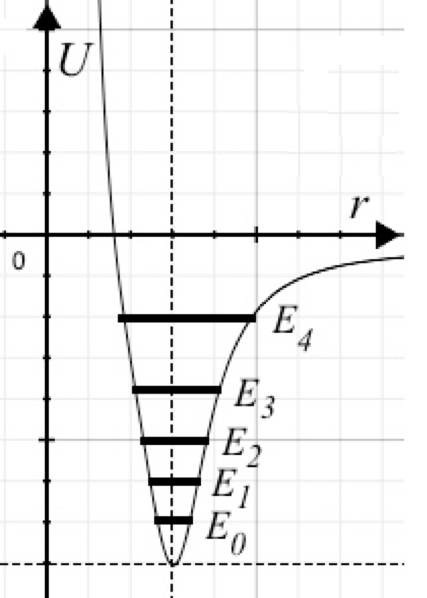Week 1 |
|
|
| 1/25 |
1 |
|
|
Introduction to the class
and review of 131 |
Quiz 0 |
| 1/27 |
2 |
6.4.2.1
Interatomic forces
6.4.2.2.
Chemical bonding
|
|
Energy and chemical bonds:
|
|
Week 2 |
Recitation:
How a kinesin walks
|
Intro to labs and peer grading, surveys |
| 1/30 |
3 |
7.2.1
Organizing the idea of energy
7.2.2
Enthalpy
|
|
Energy and enthalpy
|
Quiz 1 |
| 2/1 |
4 |
7.3.1
The 2nd Law of Thermodynamics: A Probabilistic Law
7.3.2
Implications of the Second Law of Thermodynamics: Entropy
|
|
Entropy
|
|
| 2/3 |
5 |
7.3.2.1
Why entropy is logarithmic
7.3.2.3
A way to think about entropy -- sharing
7.3.2.3.1-Example: Arranging energy and entropy |
|
Entropy: Examples
|
HW 1 |
Week 3 |
Recitation:
Entropy and diffusion
|
Lab 6.1:
Modeling fluid flow I |
| 2/6 |
6 |
7.3.2.2 Biological consequences of the 2nd Law
7.3.2.4
Example: Entropy and heat flow
|
|
The 2nd law of thermodynamics
|
Quiz 2 |
| 2/8 |
7 |
7.3.3
Motivating free energy
7.3.3.1
Gibbs free energy |
|
Free energy
|
|
| 2/10 |
8 |
7.3.3.1.1 Example: Free energy of an expanding gas
7.3.4 How energy is distributed: Fluctuations
|
|
Energy and enthalpy
|
HW 2 |
Week 4 |
Recitation: Insane in the membrane, 1: Oil & water
|
Lab 6.2:
Modeling fluid flow II
|
| 2/13 |
9 |
2.2.4.2
Powers and exponents
7.3.4.1
Boltzmann distribution
7.3.4.2
Boltzmann distribution and Gibbs free energy
|
|
Free energy
|
Quiz 3 |
| 2/15 |
10 |
8.1
The Electric field
8.1.2
Making sense of the idea of field |
|
The Boltzmann distribution, fluctuations,
and entropy
|
|
| 2/17 |
11 |
No new reading |
|
Recap: Electric charge, force,
and energy: Electric fields
|
HW 3 |
Week 5 |
Recitation: Recitation: Insane
in the membrane, 2: Lipid bilayers
|
Lab 7.1:
Electric forces in a fluid I
|
| 2/20 |
12 |
8.2
The electric potential
|
|
Electrostatic potential
|
Quiz 4 |
| 2/22 |
13 |
8.2.1
Motivating simple electric models
8.2.1.1
A simple electric model: a line charge
8.2.1.2
A simple electric model: a sheet of charge |
|
Electrostatic potential: examples
|
|
| 2/24 |
14 |
8.4.1
Two parallel sheets of charge
8.4.2
The capacitor |
|
Charged lines and sheets
|
HW 4 |
Week 6 |
Recitation:
Introduction to circuits
|
Lab 7.2:
Electric forces in a fluid II |
| 2/27 |
15 |
8.3.3
Dielectric constant
8.5.5
Electrical energy and power
|
|
Capacitors
|
Quiz 5 |
| 3/1 |
16 |
8.3.1
Screening of electrical interactions in salt solution 8.3.1.1
Debye length |
|
Dielectric constant, Electric fields
in fluids
|
|
| 3/3 |
17 |
|
|
MIDTERM 1 |
|
Week 7 |
Recitation:
What's "free" about free energy?
|
Lab 8.1: Signal transmission along nerve axons I |
| 3/6 |
18 |
8.3.2
Nernst potential
|
|
Nernst potential
|
|
| 3/8 |
19 |
|
|
Go
over midterm |
|
| 3/10 |
20 |
8.5.1
Quantifying electric current
8.5.2
Resistive electric flow: Ohm's law
|
|
Moving charge, electric current
|
HW 5 |
Week 8 |
Recitation:
Introduction to light
|
Lab 8.2: Signal transmission along nerve axons II |
| 3/13 |
21 |
8.5.3
Ways to think about current: A toolbox of models 8.5.4
Kirchhoff's principles
8.5.4.1
Example: Resistors in series
8.5.4.2
Example: Resistors in parallel
|
|
Kirchhoff's
principles
|
Quiz 6 |
| 3/15 |
22 |
8.5.4.3
Example: Batteries in series and parallel
8.5.4.4
Example: A complex network
|
|
Electric circuit examples
|
|
| 3/17 |
23 |
9.
Oscillations and waves
9.1
Harmonic oscillation
|
|
Complex electric circuit examples
|
HW 6 |
Week 9 |
Recitation:
Salting out and denaturing DNA
|
Lab 9.1: Introducing
geometrical optics I |
| 3/27 |
24 |
9.1.1
Mass on a spring
9.1.1.1
Hanging mass on a spring
|
|
Oscillating systems: Examples
|
Quiz 7 |
| 3/29 |
25 |
9.1.1.2
The pendulum
9.1.1.4
Example: Oscillator graphs
9.1.1.5
Example: Oscillator calculations |
|
Harmonic oscillation: Force, kinematics,
and energy
|
|
| 3/31 |
26 |
9.1.2
Damped oscillators
9.1.3
Driven oscillators: resonance
9.1.5
Quantum oscillators -- discrete states
|
|
Harmonic oscillator: Examples
|
HW 7 |
Week 10 |
Recitation:
Diatomic vibrations
|
Lab 9.2: Introducing
geometrical optics II
|
| 4/3 |
27 |
9.2
Waves in 1D
9.2.1
Waves on an elastic string
9.2.2
Wave pulses |
|
Waves in 1D: pulses
|
Quiz 8 |
| 4/5 |
28 |
9.2.2.1
Propagating a wave pulse - the math
9.2.3
Wave speed |
|
Wave speed
|
|
| 4/7 |
29 |
9.2.4
Superposition of waves in 1D
|
|
Superposition
|
HW 8 |
Week 11 |
|
|
| 4/10 |
30 |
9.2.5
Sinusoidal waves
|
|
Sinusoidal waves
|
Quiz 9 |
| 4/12 |
31 |
9.2.4.1 Beats
9.2.4.2 Standing waves |
|
Standing waves
|
|
| 4/14 |
32 |
9.2.6 Summing different wavelengths -- spectral analysis |
|
Fourier analysis
|
HW 9 |
Week 12 |
Recitation: Spectroscopy - How does light interact
with matter?
|
Lab 10.1: Analyzing light spectra: Implications for living
systems I |
| 4/17 |
33 |
10
Three models of light
10.3
The photon model of light
10.3.1
Basic principles of the photon model
|
|
The photon model of light
|
Quiz 10 |
| 4/19 |
34 |
10.1.1
Basic principles of the ray model
10.1.2
Flat mirrors |
|
The ray model of light: Mirrors
|
|
| 4/21 |
35 |
|
|
MIDTERM
2 |
|
Week 13 |
Recitation:
Seeing inside the body
|
Lab 10.2: Analyzing light spectra: Implications for living
systems II |
| 4/24 |
36 |
10.1.3
Curved mirrors 10.1.3.1
Curved mirror equations
|
|
Curved mirrors & lenses
|
|
| 4/26 |
37 |
10.1.4
Lenses
10.1.4.1
Lens equations
|
|
Lenses
|
|
| 4/28 |
38 |
|
|
Go over midterm |
HW 10 |
Week 14 |
Recitation:
Photosynthesis
|
Lab 11: Exploring complex absorption and emission in molecules |
| 5/1 |
39 |
10.2.1
Electromagnetic radiation and Maxwell's rainbow
10.2.2
Huygens' principle and the wave model
|
|
The wave model of light
|
|
| 5/3 |
40 |
10.2.2.1
The math of Huygens' principle
|
|
Huygen's principle
|
Quiz 11 |
| 5/5 |
41 |
10.2.3
Two-slit interference
|
|
Interference
|
|
Week 15 |
Recitation:
Why do we see in the visible?
|
Makeup labs and closing surveys |
| 5/8 |
42 |
10.2.4
Diffraction
10.2.4.1
Interference from two wide slits
|
|
Diffraction
|
HW
11 |
| 5/10 |
43 |
10.3.1.1
Reconciling the wave and photon model - sort of
|
|
Waves and photons
|
|
Exam Week |
|
|
| 5/16 |
Time: |
6:30-8:30 PM |
|
FINAL EXAM
Toolbelt |
Location:HJPatterson 0226
|

